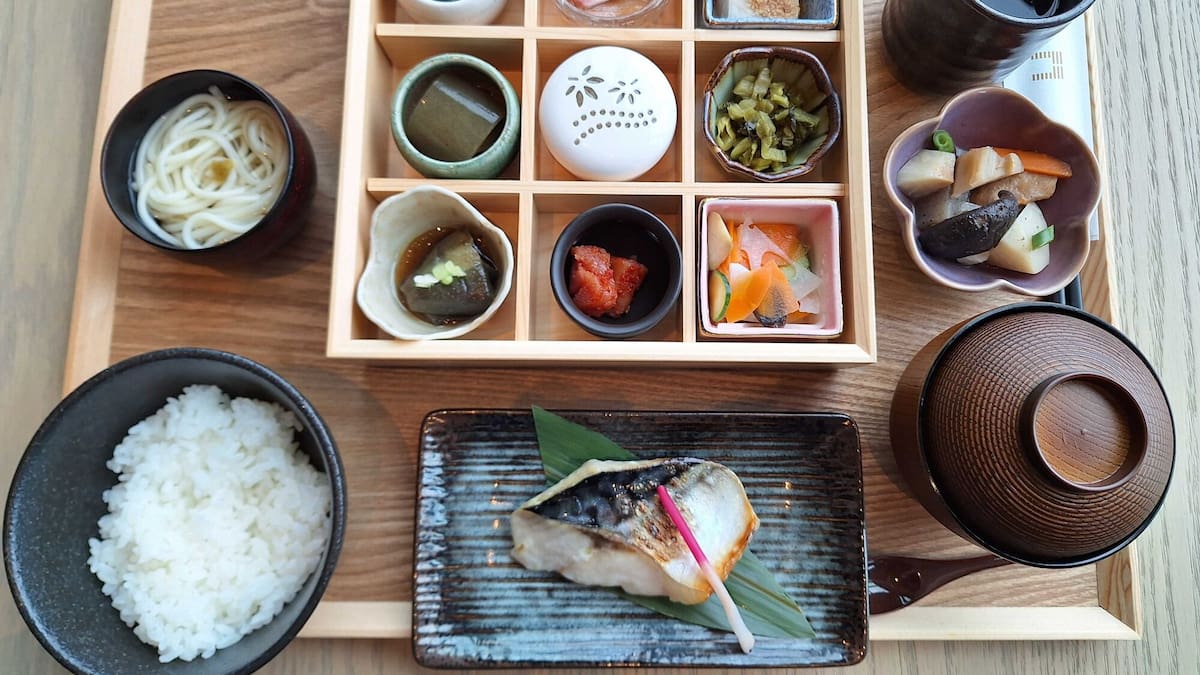Spoiler alert, my lunch didn’t harm me. Chefs in Japan must undergo highly specialised training before they are licensed to serve fugu, and most of the remaining poisoning cases occur when people buy the fish from unlicensed chefs or try to prepare the meal themselves, a practice which is outlawed.
While I enjoyed the meal and the thrill of eating something with such an infamous history, I confess my palate is not sophisticated enough for me to figure out what was so special about it, at least to make it worth breaking the law to eat.
I fear much of Japan’s authentic cuisine was lost on me, partly since I had no idea what I was eating most of the time. Yet, there’s something freeing in going to a foreign country and just embracing the mystery of what’s on your plate.
My first encounter with unknown food items was in the city of Fukuoka, where my lunch came served with a side of what looked at first glance like a human tongue. Pink, plump, and inexplicably veiny, it was also unexpectedly grainy to bite into. I only found out after eating it that it was mentaiko, a Japanese delicacy made of spiced and salted pollock roe.
If you really want to immerse yourself in local food of unknown origins, a great way to do that is with a kaiseki meal at a ryokan, a traditional Japanese inn.
When our group arrived for dinner at Hotel Yokikan, Nagato, a gasp of delight ran around the room at the sight of the meal laid out on the table. There were about eight tiny dishes at each place setting, exquisitely displayed – and that was just the entree.
Once I’d powered through what appeared to be a savoury foam on top of raw fish, a ball of jelly with green plants dotted through it, and a cube of something that tasted like solidified tomato soup, there were still about eight more courses to come. Yamaguchi is big on fresh seafood, so this was a major feature of the meal and in fact, most of the food we had throughout the trip.
Breakfast was a similar experience. When I sat down at the table, there were about 12 small dishes in front of me: concoctions of seaweed, tofu, grilled fish and edamame beans.
Those are just the ones I could identify. I still don’t know what most of the food was, but for those of us unburdened with dietary requirements, it can be immense fun just diving headfirst into the confusion.
One of my favourite dinners of the trip, though, was perhaps the most straightforward. Yakitori, Japanese barbeque skewers, is simple and delicious. Traditionally, bite-sized portions of chicken, Yakitori restaurants generally offer a variety of foods on skewers.
At Koumori in Nagato, we squeeze around a tiny bar and kitchen to watch the chef cook everything from meat to leeks, mushrooms and egg yolks – crispy on the outside and still runny on the inside – while her husband jokes with us, breaking out a haka when he realises I’m from New Zealand.
Having vowed not to eat Western food while in Japan, it seems ironic that our final dinner in Nagato is at a Kiwi-themed restaurant, if you’d believe it.
Of all the places in the world to find the Sweet As Cafe and chow down on New Zealand lamb, steak, and fish and chips, I wouldn’t have expected it to be a tiny Japanese city only visited by 13,000 tourists last year. But almost all of my meals in Japan have contained something unexpected, so it seems like a fitting end.
CHECKLIST
Nagato City, Japan
GETTING THERE
Fly from Auckland to Fukuoka, then drive or catch the bullet train (shinkansen) to Nagato.
New Zealand Herald Travel visited courtesy of Booking.Com.
Melissa Nightingale is a Wellington-based reporter who covers crime, justice, and news in the capital. She joined the Herald in 2016 and has worked as a journalist for 10 years.
